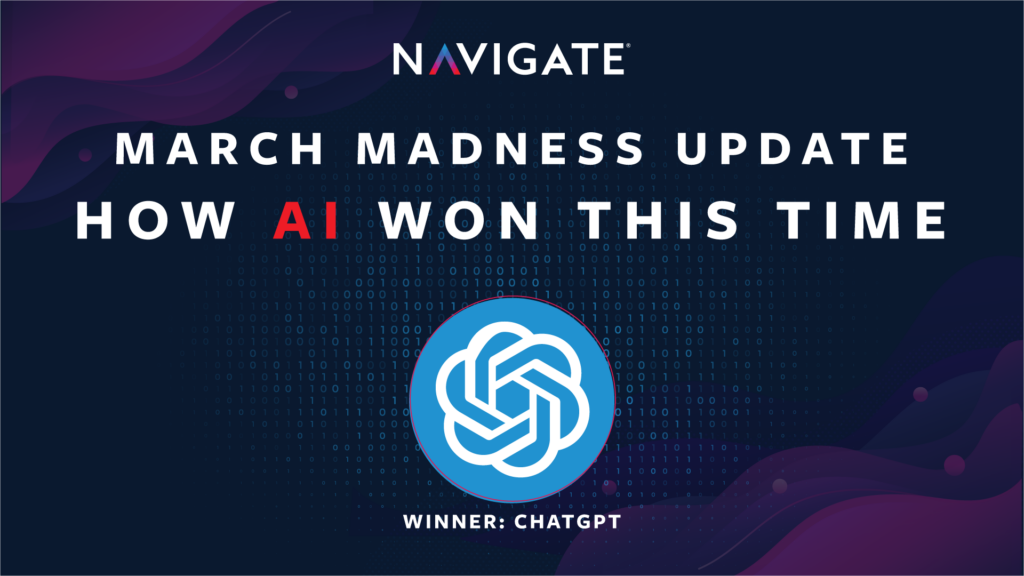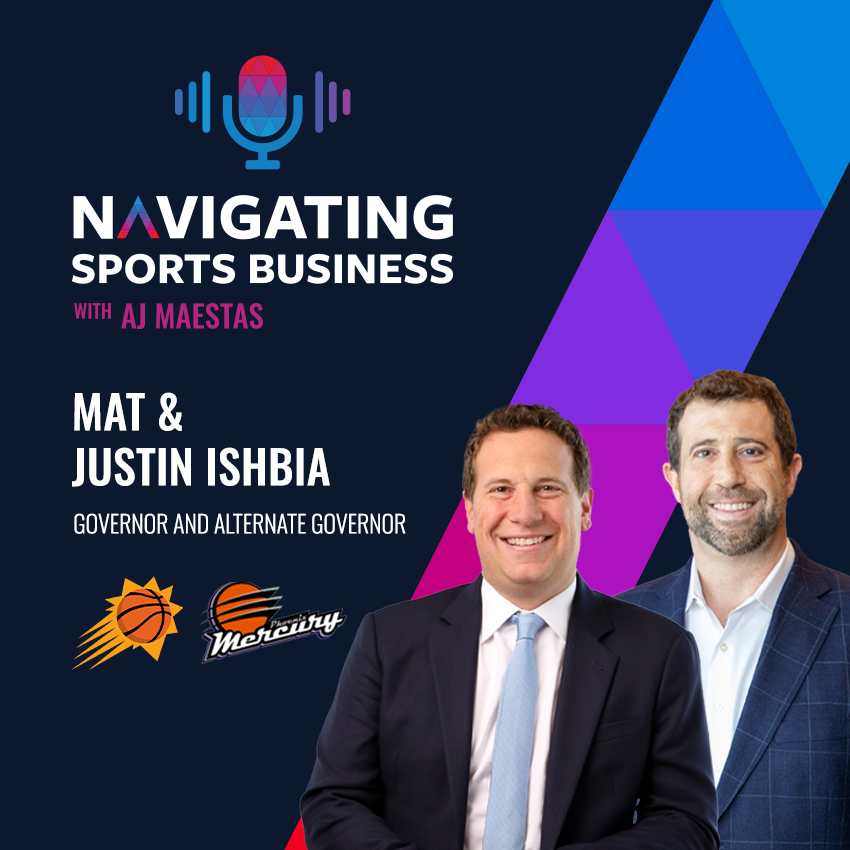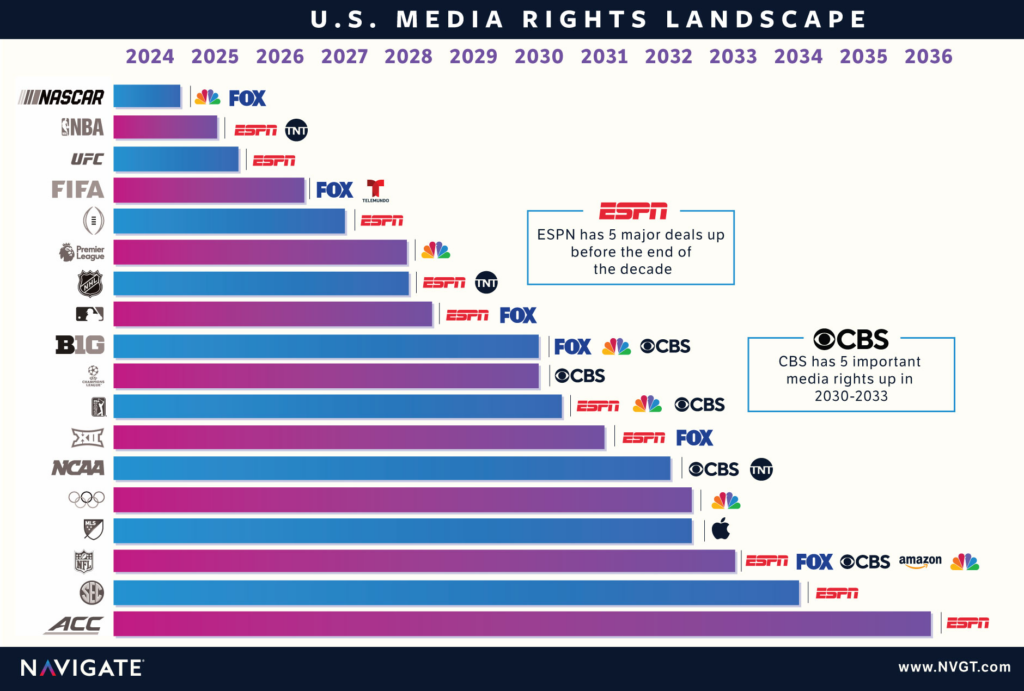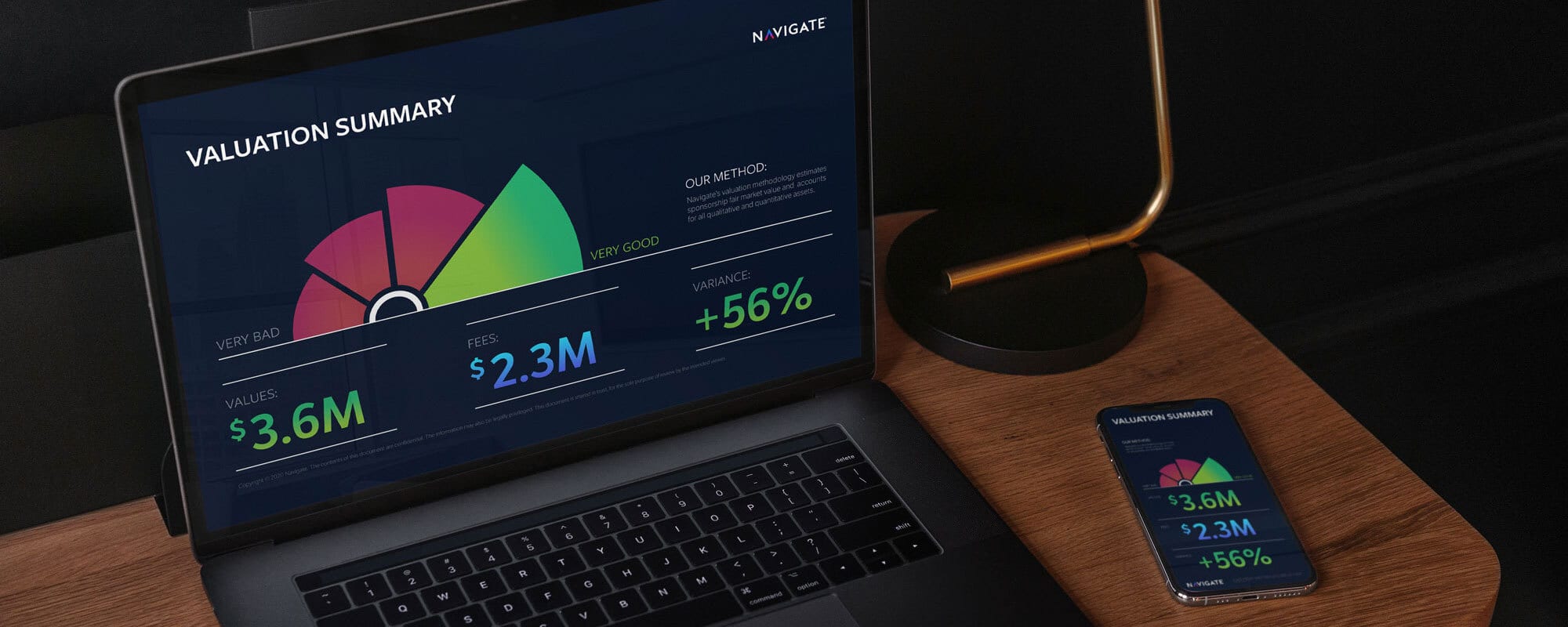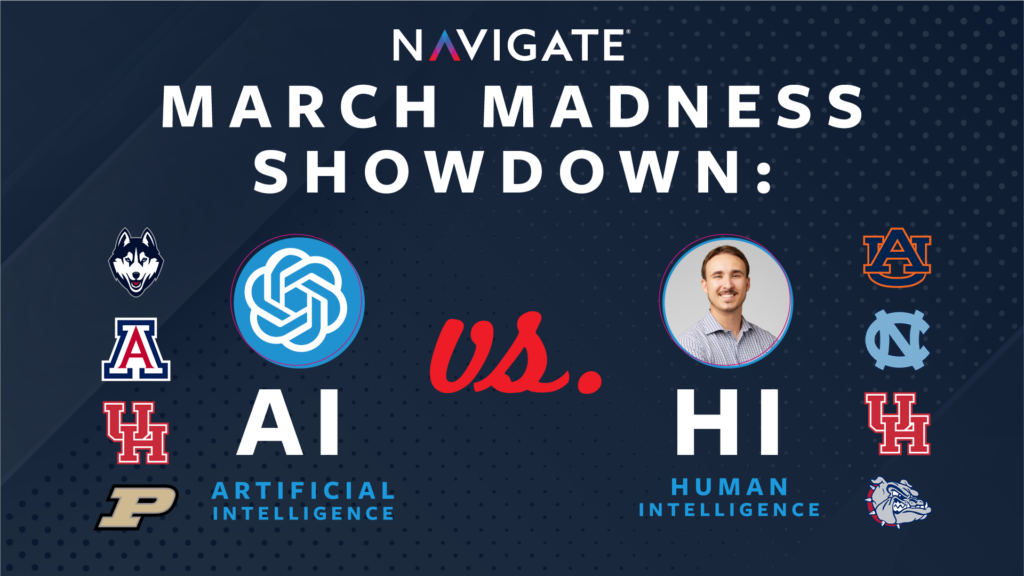
March Madness Showdown: AI vs. Human Intelligence “HI”
We’re excited to revisit a Navigate favorite in this historic March Madness showdown. In previous years we’ve used predictive modeling to inform our bracket selections, and even hosted an Art vs. Science showdown between Navigate’s SVP of Client Strategy, Jordan Bloem, and SVP of Analytics & Innovation, Matt Balvanz.
This year, March Madness will be the first battleground in the struggle between humanity and the machines. We are pitting A.I. (Artificial Intelligence) against H.I. (Human Intelligence) to see which can do a better job at predicting the outcome of the NCAA Men’s Basketball Tournament.
Representing H.I. is yours truly, Navigate’s Senior Manager of Data Strategy, and resident basketball super fan, Drew Bolero. I will use my expertise in data analysis, combined with my knowledge of college basketball, and a little bit of human bias to fill out this year’s bracket.
My opponent will be a custom GPT built out using OpenAI’s ChatGPT, that has never directly watched a college basketball game, but has been fed a variety of data sources including stats and betting lines.
AI: ChatGPT’s Approach
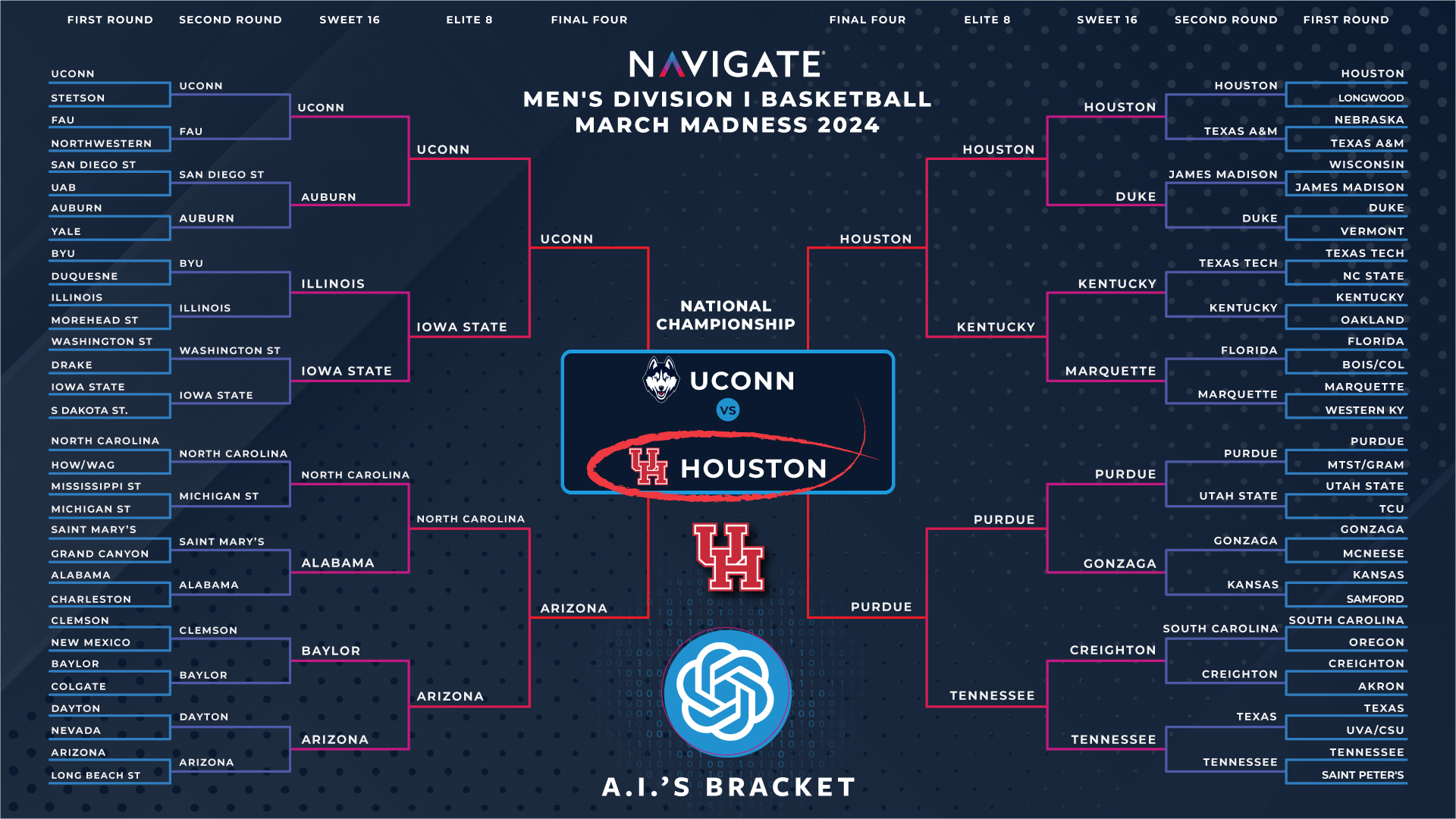
Our basketball AI was built out using stats from SportsReference.com, KenPom.com, the NCAA website, and a combination of betting lines that were available for the first round of games. It’s only directive was to select the winner of all 63 games in the tournament.
If you look at the bracket it created, you’ll notice it picked very few upsets. If we had to compare this bracket to an early 2000’s Nickelodeon show, it would be ChalkZone. At first glance, this seems like an error in the training of the AI.
In an average year, you can expect around 8.4 upsets in the men’s tournament (defining an upset as a victory for a team ranked five or more seeds worse than their opponent). So you’ll often see bracket pickers aim for that number or more. However, our AI picked only 3 games where the higher seed did not win, and 2 of them were 9-seeds upsetting 8-seeds, which we barely consider an upset. In one of those cases, 9-seed (Michigan State) was even favored in the betting markets versus 8-seed Mississippi State.
Remember that our AI was not instructed to use any tricks or historical data about bracket trends , but was simply guided on a game-by-game level to pick the better team with the better matchup. So in a way, it makes sense that it’d end up with the higher seeds winning more often than not. In theory, the committee that chose the seeding was using much of the same data that our AI had access to.
Our AI was also instructed to give a brief explanation for why it made each pick.
9-seed Texas A&M over 8-seed Nebraska
- Despite Nebraska’s seed, Texas A&M has shown resilience against tough opponents.
- Close betting line, but Texas A&M’s performance in key games gives them the edge.
12-seed James Madison over 5-seed Wisconsin.
- James Madison’s record and performance metrics suggest they could be a strong underdog.
- James Madison’s high-scoring offense tilt the scales in their favor.
Champion: Houston Cougars
- Houston’s season-long excellence, combined with their superior efficiency and balanced play, gives them the slight edge in what promises to be a closely contested final [vs. UConn].
Human Intelligence “HI”: Drew’s Strategy
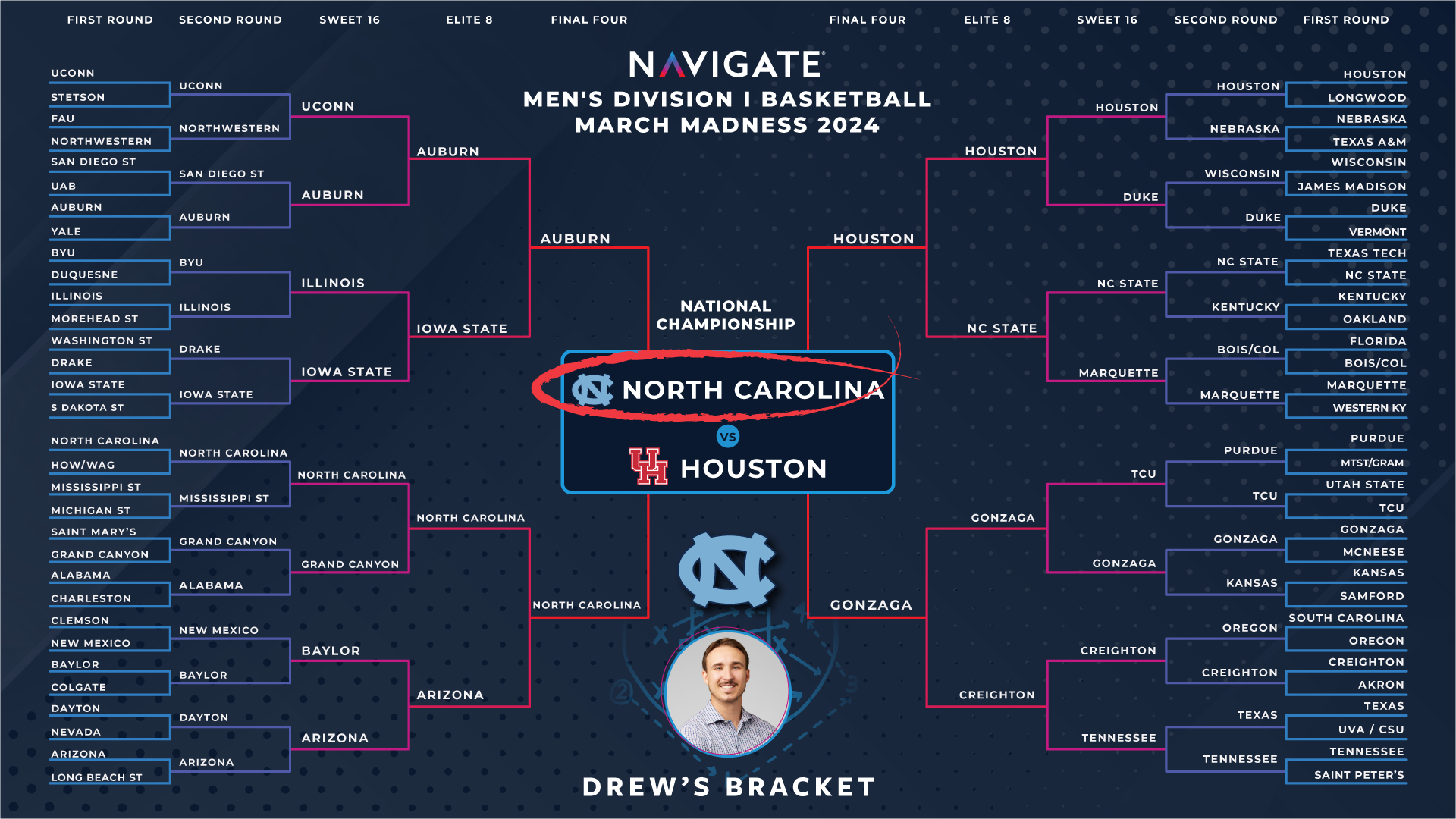
On the surface, my approach was fairly similar to the AI’s. I researched using KenPom rankings, some major publications including The Athletic and ESPN, as well as some data points I pulled together myself. I also watched quite a bit of college basketball this season, with a focus on my Iowa Hawkeyes and the rest of the Big Ten. I certainly let my personal fandom and biases influence my picks, and made an effort to mix in some upsets, especially in the first round. There’s also the entertainment factor – it’s boring to always pick the higher seed!
My personal strategy revolved around 3 key points:
- Pick teams with experienced head coaches.
- Pick teams with a lot of upperclassmen.
- Pick teams who have had recent tournament success.
When possible, I let those points influence my decisions, especially when the teams had similar statistical résumés this season.
A quick explanation of some of my notable picks:
9-seed TCU to the Sweet 16
- TCU’s lineup is loaded with seniors, including Jameer Nelson, Jr. who I’m familiar with through playing NBA 2K using his dad on the Orlando Magic.
- Jamie Dixon is an experienced head coach, who’s won tournament games with this program the last two seasons.
- Candidly, I’m biased against Purdue as a Big Ten fan.
- Purdue’s guards are improved over the team that got upset last year, but their last 6 games have all been decided by single digits.
12-seed Grand Canyon to the Sweet 16
- My parents went to Valparaiso University, so I grew up rooting for Bryce Drew teams.
- This is their 3rd tournament appearance under his tenure; feels like they’re primed for a run.
- Expecting a tough battle against Saint Mary’s, but if they win, they’ve got a shot against Alabama and their vulnerable defense.
Champion: North Carolina Tar Heels
- I loved watching this team’s run in 2022 and think this core has the potential to do it again.
- Their first two matchups will be in Charlotte, just 2 hours from Chapel Hill
- They’re led by 2 incredible seniors—RJ Davis and Armando Bacot
- UNC is 9-3 in Quad 1 games
- UNC is a top-10 KenPom offense
The Competition
Now that the brackets have been filled out, we’ll track their progress through a standard points scoring system that awards 1 point for a correct pick in the first round, with point values doubling in the following rounds. Check back in the coming weeks to see who comes out on top!


